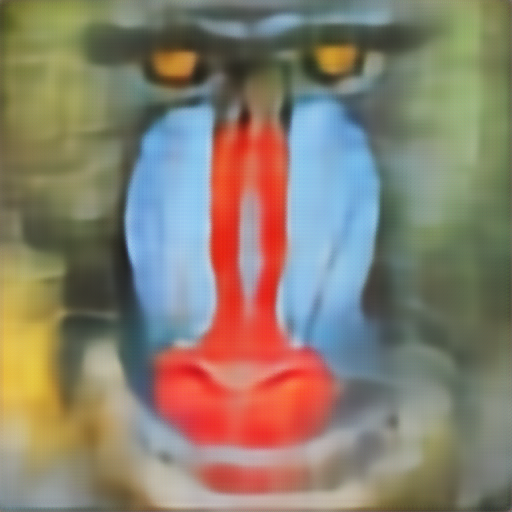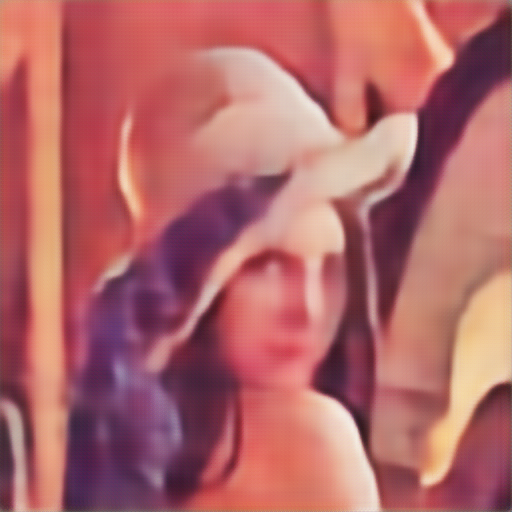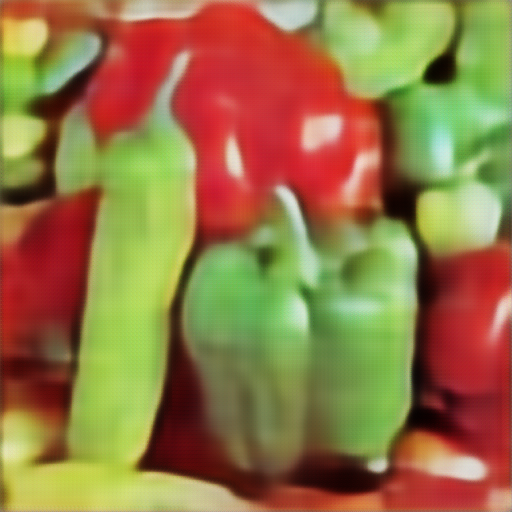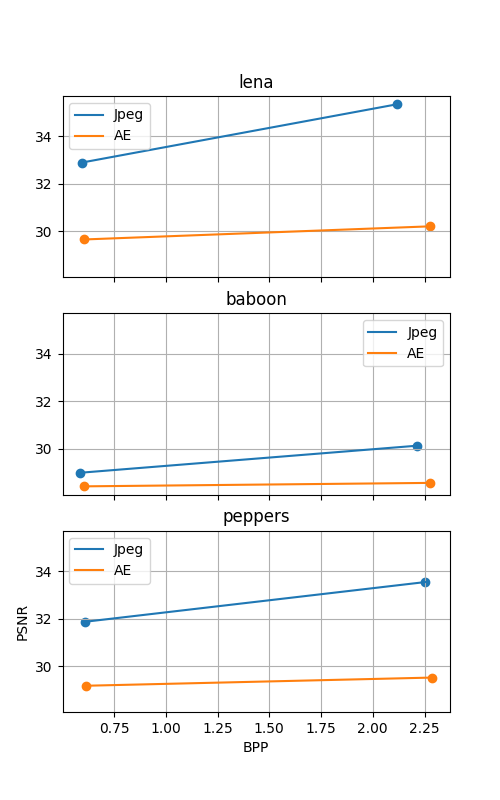Image compression using neural auto-encoder and quantization
This project is a simple implementation of auto-encoder neural network for image compression. The auto-encoder neural network is trained on the ImageNet dataset. The trained model is then used to compress and decompress the images.
Navigation:
- Model architecture
- Download pretrained models
- Quantization
- Quick start
- Compression
- Decompression
- Training from scratch
- Results
- Notebooks
Model architecture
Model represents a variational auto-encoder with residual blocks and skip connections.
- Encoder: ResNet-18 architecture with fully connected layers
- Decoder: ResNet-18 architecture with transposed convolution layers
- Loss: VGG loss + MSE loss
- Optimizer: Adam optimizer
Download pretrained models
Models were trained on 130k Images (512x512) - Universal Image Embeddings dataset from Kaggle.
Here are the links to download the pretrained models: B = number of quantization levels
Put downloaded models in models directory.
Quantization
Model outputs feature maps with 512 channels and 8 x 8 spatial dimensions. Then the feature map are flattened and
become a vector of size 32768. The vector is then quantized into B quantization levels.
Train quantization
In training phase noise is appended to the input image. The noise is sampled from N(-0.5, 0.5) and then noise scaled
by
B quantization levels. So the final noise vector is
scale = 2 ** -B
noise = (torch.randn(n) * 0.5 - 0.5) * scaleInference quantization
In inference mode vector is quantized using torch.clamp(0, 1) and then scaled by B quantization levels.
So the final quantized vector is
quantized = torch.clamp(vector, 0, 1) * 2 ** B + 0.5
quantized = quantized.int()Quick start
compress_all.sh compresses all images from assets/images directory and saves them
in assets/compressed directory.
compress_all.sh takes 3 arguments:
qb- number of quantization levelsresnet-model- resnet model architecturedevice- torch device to evaluate on
# Compress all images from assets/images directory
bash scripts/compress_all.sh 8 resnet18 cpudecompress_all.sh decompresses all images from assets/compressed directory and saves
them in assets/decompressed directory.
decompress_all.sh takes 3 arguments:
qb- number of quantization levelsresnet-model- resnet model architecturedevice- torch device to evaluate on
# Decompress all images from assets/compressed directory
bash scripts/decompress_all.sh 8 resnet18 cpuCompression
In compression phase the encoder encodes the image into a vector of size 32768 (this is flattened feature map from last
convolutional layer of the encoder of size 512 x 8 x 8).
Then the vector is quantized into B quantization levels. And finally the quantized vector is compressed
using Adaptive Arithmetic Coding. Arithmetic encoder takes quantized vector with values in range [0; 2^B] as the input and outputs binary sequence. Encoding is performed using arithmetic-compressor python package. SimpleAdaptiveModel was used for probabilities update. This model gradually forgets old statistics with exponential moving average.
Final compressed file consists of:
vector- quantized vectorshape- feature map shape
# Compress the `baboon` image from assets/images directory
python compress.py \
--image=assets/images/baboon.png \
--output=assets/compressed/baboon.bin \
--models-dir=models \
--resnet-model=resnet18 \
--qb=8 \
--device=cudaDecompression
In decompression phase the compressed file is decompressed using Adaptive Arithmetic Coding. Then the decompressed
vector is dequantized and decoded by the decoder. The decoder outputs the decompressed image.
dequantized vector = vector / (2 ** qb)
# Decompress the compressed image
python decompress.py \
--file=assets/compressed/baboon.bin \
--output=assets/decompressed/baboon.png \
--qb=8 \
--resnet-model=resnet18 \
--models-dir=models \
--device=cudaTraining from scratch
python train.py \
--root [path to images] \
--test-root [path to test images] \
--resnet-model [resnet model architecture] \
--qb [number of quantization levels] \
--epochs [number of epochs] \
--batch-size [batch size] \
--lr [learning rate] \
--device [torch device to train on] \
--save-results-every [save results every n epochs] \
--save-models-dir [path to save models] \
--use-checkpoint [use checkpoint to resume training]Results
Images
B=2
| (Jpeg QF, BPP) | Jpeg | Auto-Encoder |
|---|---|---|
| 12, 0.605 |  |
 |
| 35, 0.605 |  |
 |
| 33, 0.605 |  |
 |
B=8
| (Jpeg QF, BPP) | Jpeg | Auto-Encoder |
|---|---|---|
| 72, 2.28 |  |
 |
| 90, 2.28 |  |
 |
| 89, 2.28 |  |
 |

